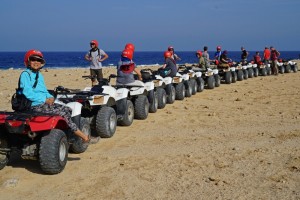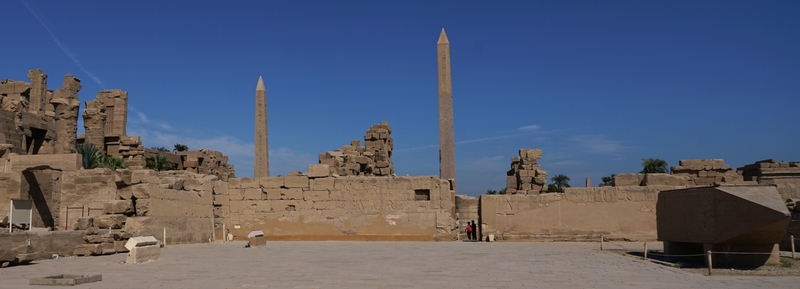26 Days from Cairo to Khartoum: Day 7 – 13 – Red Sea, Qena & Luxor
Day 7 October 28 Friday: Zafarana – El Quseir
I got up before 6am and finished my travel notes on Corsica. The road remained closed: drivers and passengers were hanging around in the restaurant or strolling around. Shortly after 9am, we discovered some movements along the highway: the road in the direction of El Quseir seemed open. Our leaders decided to move on and no one stopped our truck. Many vehicles also followed our example.
 |
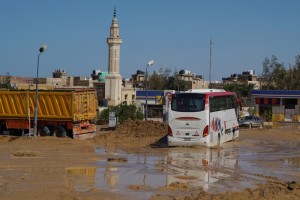 |
 |
 |
There were few vehicles on the road. We saw many cars, buses and trucks stuck, overturned or buried in mud. Some sections of the highway were damaged. We also saw serious flooding at several locations and in small towns. It’s the first time I saw a flash flood. Later I learned that the heavy rains and flash floods from October 27 to 29 affected much of Upper Egypt killing at least 22 people from two travel writers whom I met a few days later (www.westwards.typepad.com)
On our way to Hurghada, we could see the Sinai Peninsula and its mountain ranges. I love to visit this peninsula and hike to Mt Sinai on my next visit. We had a lunch break in Hurghada at 1:30pm. Rinske, Janice and I went to the local market where I brought a full bag of bananas, persimmon and guavas for E₤15. I love to have a grilled seabass which cost only E₤10. But it would take 15-20 minutes and I had to be back to Xara by 1:30pm. So I had fruit and no fish for lunch.
 |
 |
We had an uneventful drive and arrived at our campsite by a small beach at 5pm. The place is charming with eight rustic and flimsy huts built with wood and leaves. Guests can sleep on a flat or declining bed. The spacious sitting room and dining hall are simple and artistic. Apparently the owner had studied and worked as a social worker in Germany before returning to Egypt. He has opened this campground for a few years. But business has dropped in recent years owing to unstable political situation.
 |
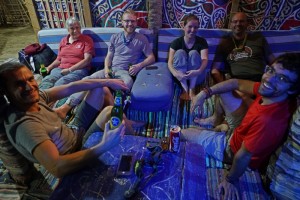 |
I like this place and the food was great. We had salad, grilled fish, soup and rice for dinner with cold beer. I shared a hut with Jane who had an inflatable mattress and a sleeping bag with her. I found the declining wooden bed too hard and uncomfortable. I was cold as I had only a sleeping bag liner. I was restless and got up once to look at the starry sky and listen to the sounds of the sea.
Day 8 October 29 Saturday: El Quseir – Marsa Alam
I had a sleepless night. At dawn, I got out of the hut, walked along the beach and watched sunrise. As I had the wrong setting on, I lost all the photos taken in the morning. But it’s not important- the gorgeous moments will always stay with me in my mind. The original plan was to go snorkelling at 7am with the owner. But as it was windy with strong currents, the activity was cancelled.
 |
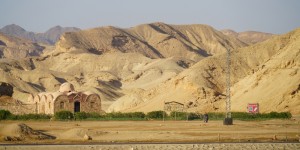 |
After breakfast, the owner accompanied us to visit El Quseir, a coastal town with a history spanning back 5,000 years and was once one of the principal ports of the ancient Egyptians. Today, it is a sleepy quiet town not yet spoilt by tourism. The major attraction here is the Ottoman fort built by Sultan Selim in the 16th century. We strolled along the harbour and had coffee before leaving for Marsa Alam.
 |
 |
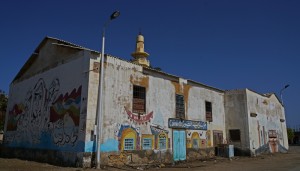 |
 |
As it was too early for check-in, we had lunch at a roadside restaurant outside Marsa Alam. I was not hungry and skipped lunch. At 3pm, we drove back to the Beach Safari, a resort built in Nubian style, with a big swimming pool and a small natural beach. I shared a spacious and comfortable room with air-conditioning with Maddy. According to the original programme, we would spend two nights in this resort. For some unknown reasons, we stayed there for three nights. I am easy and take whatever comes along. But some truck mates find the place boring and want to be on the go without stop.
Day 9 October 30 Sunday: Snorkelling
![redsea[1]](http://www.sarahontheroad.hk/wp-content/uploads/2017/01/redsea1-200x300.gif) Red Sea is a narrow strip of water extending southeastward from Suez, Egypt for 1,930km to the Bab el-Mandeb Strait, which connects with the Gulf of Aden and hence with the Arabia Sea. It is a top diving destination in the world.
Red Sea is a narrow strip of water extending southeastward from Suez, Egypt for 1,930km to the Bab el-Mandeb Strait, which connects with the Gulf of Aden and hence with the Arabia Sea. It is a top diving destination in the world.
I planned to dive in the Red Sea and came prepared with my own mask with prescription. I was delighted to learn that I could have two dives for US$50. But Hassen, the manager told me the morning dive was for divers with an advanced diving license. I am not qualified. But the afternoon dive was fine for open water divers like me. But Hassen asked me to pay the same price for a dive. I considered it unreasonable and dropped the idea. He offered to take me to the site for snorkelling for US$10.
Rinske, Barbara, Steward, Ryan and Alan were interested too. I paid US$10 for the transportation while my friends who hired snorkelling gears paid US$15. As there was not enough space in Hassen’s truck, we had to go in our own truck. We had perfect weather and condition: the water was warm and clear with good visibility, the cove was calm without waves. I had a fantastic time and saw healthy and colourful hard coral and lots of colourful coral fish. The visibility was not good after 4:30 pm. We were ready to go but had to wait for Barbara for half an hour.
As Hassen could not charge us for transportation, he charged US$10 for the snorkelling gears. As soon as we were back in the resort, Barbara demanded Hassen to return US$5 to her as she had only used the fin (she had her own mask and tube). Hassen gave her a $10 note he had in hand. Then she refused to give US$5 back to Hassen by using all sorts of excuses (she is mean and would not give tips to local guides anyway). Hassen was annoyed but could not do anything. He is a fair person: he gave me US$10 back as I had not taken any gear from his shop. One member of the group found Barbara’s behaviour disgusting and told her so the next morning! Interesting group dynamics!
Day 10 October 31 Monday: Quad Biking & Sunset in Eastern Desert
I had a leisure morning writing my travel note. After a light lunch, most of us set off with a local guide on a day trip at 12:15 pm. First we had quad biking in the desert for about half an hour. It’s my first time and I had to learn how to control it. I drove slowly but unsteadily at the beginning: I was far far behind the others and the instructors looked worried. Anyway, I returned to the depot without accident covering some 5 km in distance. I prefer snow mobile which is more fun and easier to manoeuvre!
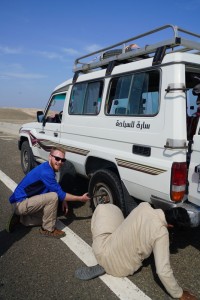 |
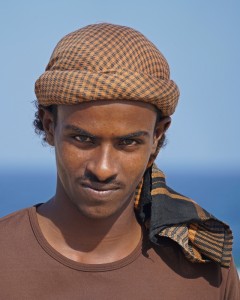 |
Then we were taken in another vehicle heading towards a “Bedouin camp” in the Eastern Desert. I have travelled through a number of desert and am not particularly impressed by the landscape. We had a ten-minute ride on a camel. Then our local guide showed us how the Bedouin find water sources and took us to a shop selling Bedouin herbal medicine. We visited a show village of one Bedouin extended family that has 26 members in total. We saw how a Bedouin woman and her daughter make bread and the sheds where the sheep are kept. They served us coffee before we walked up a hill to watch sunset. I was not impressed by the colours.
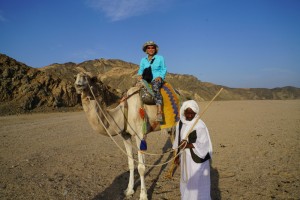 |
 |
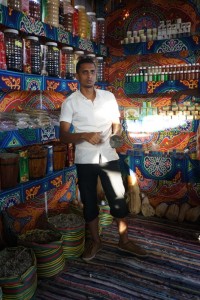 |
 |
 |
The driver took a short-cut and the return journey was much shorter. We had a buffet dinner with grilled chicken and salad followed by a performance with dance and music. I enjoy the young dancer‘s amazing performance.
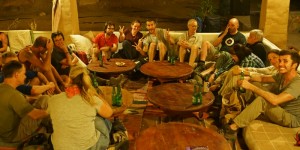 |
 |
By the time we arrived at the resort, it was after 8:30 pm. I paid $66 for the full day tour. Though I find the Bedouin village not authentic, the quad biking not my favourite and the sunset not gorgeous, I admit the program for an average tourist is fairly good and value for money. Above all, the local economy badly needs to earn from tourists which number has dropped drastically in recent years.
Day 11 November 1 Tuesday: Marsa Alam – Luxor
I got up at 6 am and had a nice stroll along the beach watching a fisherman catching two baby barracudas. Around 8:30 am, we set off: we were all glad to be on the road again. As the desert road near El Quseir was closed owing to the recent heavy rains, we had to drive to all the way back to Safaga before taking D60 across the Eastern Desert to reach Qena. The landscape changes: the desert is intersected by mountain ranges.
 |
 |
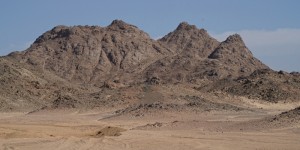 |
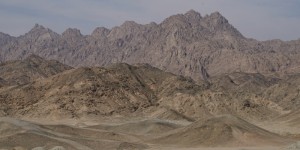 |
Ancient Egyptian Deities (Gods and Goddesses)
Gods and goddess (deities) played an important part in the ancient Egyptian culture and religion. The best known deities with distinct iconographies that often appear in temples and paintings, include the following:-
- Amun – Ra (or Ra), Sun God, ruler of the heavens and patron of pharaohs;
- Anubis, God of funeral and embalming;
- Bast, Cat God;
- Bes, dwarf god, a protector god who helped in childbirth and promoted fertility;
- Geb, God of Earth;
- Hathor, Cow Goddess of love, happiness, dance and music and protector of women; daughter of Ra and wet nurse of Horus;
- Horus, God of kingship and war;
- Isis, Mother Goddess (lover of Osiris who used her magic to resurrect him after his death. She is honored for her role as the mother of Horus, one of Egypt’s most powerful gods), the Divine Mother of every Pharaoh of Egypt, and ultimately of Egypt itself;
- Khonsu, Moon God andson of Amun and his divine consort Mut;
- Ma’at (daughter of Ra and wife of Thoth), Goddess of truth and balance;
- Nut, Goddess of the sky and stars;
- Osiris, God of the underworld and afterlife;
- Ptah, God of wisdom, craftsmen, pottery and creation;
- Ra, God of the Sun
- Set, God of desert, storms, disorder, violence and foreigners;
- Thoth, Scribe God and God of wisdom.
We crossed the Nile before arriving in Qena around 2pm. I was surprised to find a tidy, clean and leafy city without litter in the street.
 |
 |
 |
 |
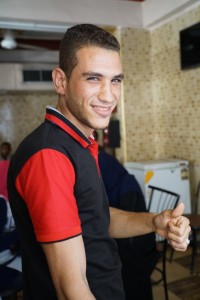 |
After a quick lunch, we drove another half an hour and met our guide Maru outside the Dendera Temple.It is believed that a shrine was first built on the site around c2250. In the 18th Dynasty (c1500 BC), a temple was built. But the earliest extant building in the existing complex is the Mammisi raised by Nectanebo II (360-363 BC). The complex with an area of 40,000m² is surrounded by mud brick walls. The first shrine on this site started as far back as the Middle Kingdom. The present structure of the main temple dedicated to Hathor dates to the Greek an Roman periods with the sanctuary and its surrounding chapels built by the late Ptolemies in the 1st century BC. The great Hypostyle Hall with 18 Hathor-headed colossal columns with some restored paintings, was built in the 1st century AD.
 |
 |
 |
 |
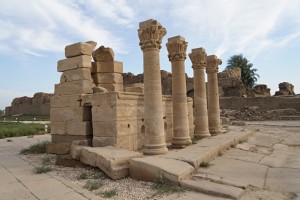 |
 |
The Hathor Temple covered with relief sculpture on both the outer and inner walls, is one of the best preserved temples in Egypt. At the end of the temple is the Great Seat and Main Sanctuary while a dozen of shrines dedicated to Hathor, Isis, Sokar, Harsomtus, gods of Lower Egypt, Ra etc, is located on both side of the temple.
 |
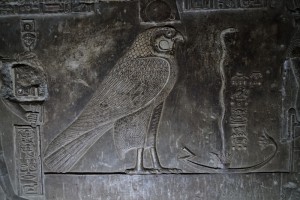 |
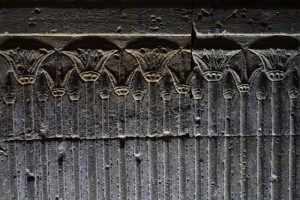 |
 |
We descended into the crypt which walls are covered with cobra and lotus relief sculpture. We also climbed the staircase to the upper level- rooftop to visit the the sanctuaries and the Mummified Room. The walls are covered with paintings with vivid colours. We also saw the sculptured Dendera zodiac, a widely known found relief in the late Greco-Roman period. I was totally captivated by the awesome relief sculptures and paintings. We had to leave it at 5pm. It is impossible to see the temple in an hour and I hope to return one day.
 |
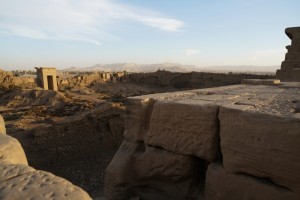 |
 |
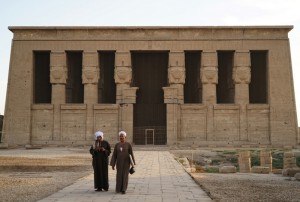 |
We arrived at our hotel in Luxor called Rezeiky Camp around 7pm.
Day 12 November 2 Wednesday: Valley of the Kings, Luxor
Luxor, the ancient city of Thebes and city of Amun, was the capital of Egypt during the New Kingdom. It is the world’s greatest open-air museum consisting of the ruins of the temple complexes at Karnak and Luxor, monuments, temples and tombs of the West Bank Necropolis including the Valley of the Kings and Valley of the Queens, all of which are World Heritage properties.
We set off earlier for the Valley of the Kings accompanied by Tony, a local guide. In 1979, I crossed the Nile by ferry and cycled to the Valley of Kings with several backpackers from the hostel. Today, Luxor is beyond recognition with many new buildings, a promenade along and a new bridge across the river. The west bank looks greener with extensive fields under cultivation.
The Valley was used for primary burials from approximately 1539 BC to 1075 BC. A total of 63 tombs have been discovered and the most famous one is KV62 – the tomb of Tutankhamun (1361-1352 BC) which was discovered in November 1922 by Howard Carter. I was lucky to visit it in 1979 and was amazed by the vivid and beautiful paintings inside the tomb.
Today, the Valley is too commercial. Eleven tombs are open: a visitor can visit three tombs with a normal ticket (E₤100) . But a few tombs require extra payment i.e. E₤100 for KV62 and E₤1000 for KV17 (the tomb of Seti I (1318-1304BC) which is said to be the finest and longest tomb (over 120m long) in the valley.
The three tombs I have visited are:-
KV34 – Tuthmosis III (reign1479-1425 BC 18th Dynasty). The Litany of Ra appears in the burial chamber which has an unusual oval shape. Many of the wall decorations in a yellow-tinged background (intended to resemble aged papyrus) are in an unusual style not found in other tombs in the Valley.
KV6–Ramses IX (reign 1129-1111 BC 20th Dynasty ). There are three chambers at the end of the corridor. The first of these is decorated with the Opening of the Mouth. The second contains four large columns but both the stone cutting and decoration work were not completed. The third at the far end is the burial chamber where the pharaoh’s sarcophagus was placed. The ceiling is decorated with pictures of the goddess of Nut. The side walls show the scenes from the Book of Caverns and the Book of the Earth. The yellows, dark blues and blacks used to decorate this chamber are most striking and unusual among the tomb decorations in the Valley.
KV2 – Ramses IV (reign 1155-1149 BC, 20th Dynasty). The tomb consisting of three slowly descending corridors, has a maximum length of 88.66m. This is followed by an enlarged chamber and then the burial chamber flanked by three side chambers. The tomb is mostly intact and is decorated with scenes from the Litany of Ra, Book of Caverns Book of the Dead, Book of Amduat and the Book of the Heavens. This is the tomb with the second largest number of Greek and Coptic graffiti whichis visible near the entrance. The paintings are striking and bright: the yellow colour gives the tomb a warm and cheerful feel. The enormous pink-granite sarcophagus standing in the middle of the chamber with cartouches on the wall above is impressive.
Mortuary Temple of Hatsheput
We left the valley around 10:30am for the Temple of Hatsheput(1507 – 1458 BC, Fifth Pharaoh of the 18th Dynasty who reigned (the first female pharaoh) from 1478 – 1458 BC) located beneath the cliffs at Deir el Bahari near the Valleys of the Kings. The temple with an avenue of sphinxes is dedicated to the Sun God of Amun. There are three layered terraces reaching 29.6m tall. These terraces are connected by long ramps which were once surrounded by gardens with foreign plants. We spent almost an hour at the temple:-
 |
 |
- Chapel of Hathor. The face of the goddess and sistrum form the capitals of the square pillars on the top of a column. The goddess appears in her bovine and human forms
-

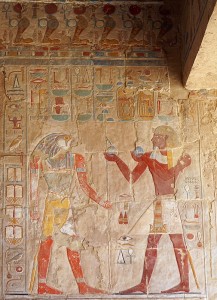

- Birth Colonnade with reliefs asserting Hatsheput’s divine parentage.
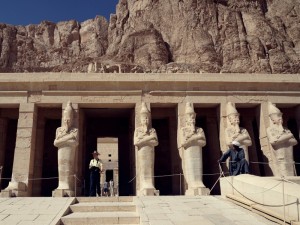 |
 |
- Chapel of Anubis with fluted columns and colouful murals.
- Punt Colonnade showing Hatsheput’s journey to Somalia.
Before crossing the Nile, we had a brief stop to take photos of the Colossi of Memnon representing Amenophis III seated on a cube shaped throne. The South Colossus stands at 19.59-m high and the base is partly buried under the sand. The North Colossus is the famous ‘ musical statue”. We were back in the hotel around 1pm.
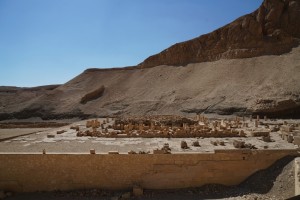 |
 |
Luxor Temple
It was so hot that I did not venture out till 3:30pm. I walked leisurely along the river and spent over an hour in the temple (entrance fee: E₤60). Founded around 1400 BC and built with Nubian sandstone quarried about 65km north of Aswan, the temple was dedicated to the Theban Triad of the cult of the Royal Ka, Amun, Mut and Khonsu and built during the New Kingdom. The temple were built first by Amenhotep III of the 18th Dynasty on the site of an earlier sandstone temple. It was linked up with the Karnak Temple by an avenue of sphinxes.
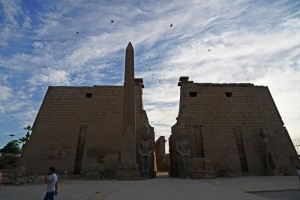 |
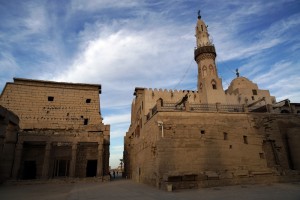 |
 |
 |
Like all Egyptian temples, the complex comprises the chapels of the deities with their vestibules and subsidiary chambers, a large Hypostyle Hall, and open Peristyle Court that was approached from the north by a great colonnade. The temple was added to and changed by pharaohs including Amenophis IV, Tutankhamun, Seti I and Ramses II. The Roman built a fort nearby. During the Christian era, the temple underwent transformation into a church and later the Mosque of Abu el-Haggag was built inside the complex. Excavation of the complex began in 1884.
 |
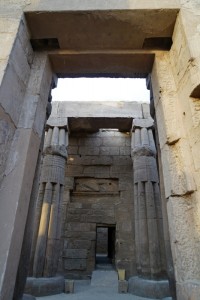 |
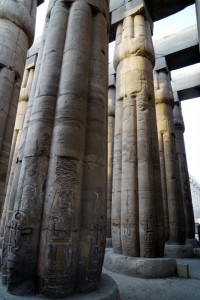 |
Dedicated to the rejuvenation of kingship, the temple was the focus of the annual Opet Festival, in which a cult statute of Amun was paraded down the Nile from the Karnak Temple to stay in the Luxor Temple for a while, with his consort Mut, in a celebration of fertility.
 |
 |
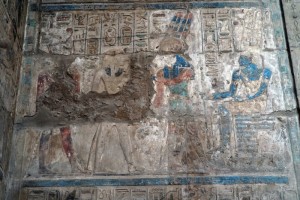 |
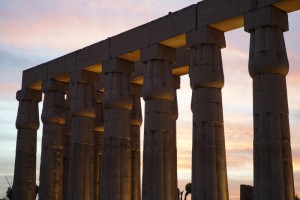 |
Today, a small section of the avenue of the sphinxes still stands in front of the temple. There were few visitors when I entered the temple: I was able to stroll without disturbance. But as soon as the lights were turned on after sunset, droves of tourists arrived. I must say the temple with lights looks mystical and more attractive.
 |
 |
On my way to the hotel, I stopped at the Luxor Museum (entrance fee: E₤100) which is the best I have visited in Egypt. The museum though small has an outstanding collection from the local area that tells the story of ancient Thebes from the Old Kingdom right up to the Islamic period. There are two Royal Mummies of Ahmose I and possessions of Ramses I. The museum is beautifully designed with superb lighting and information on each exhibit.
Day 13 November 3 Thursday: Karnak Temple and Valley of the Queens, Luxor
A hot balloon flight at sunrise is a dream trip for many tourists. My friends booked a flight for less than E₤500. Though I did not intend to fly, I got up early at 4am and went with them to the launching pad at the west bank. The weather was good and about ten balloons took off that morning. I enjoyed watching the balloons taking off with 20-30 persons in their big baskets. A beautiful sunrise over the Nile and the fertile plain must be magical. My friends told me they had an amazing time and could see the Karnak Temple from the balloon too.
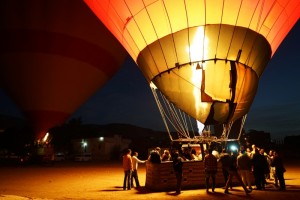 |
 |
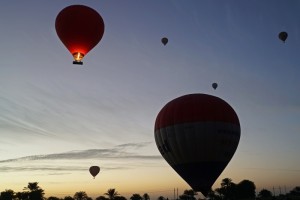 |
 |
Karnak Temple Complex
 We returned to the hotel before 7:30am and set off with Tony an hour later to visit the temple complex (commonly known as Karnak) which is 2.4-km from the Luxor Temple. Built over 2000 years from the reign of Senusret I in the Middle Kingdom to the Ptolemaic period, approximately thirty pharaohs contributedto the buildings. Comprising a vast mix of temples, chapels, pylons and other buildings, itis the second largest ancient religious site in the world after the Angkor Wat Temple of Cambodia. Its sheer size and number of features are overwhelming.
We returned to the hotel before 7:30am and set off with Tony an hour later to visit the temple complex (commonly known as Karnak) which is 2.4-km from the Luxor Temple. Built over 2000 years from the reign of Senusret I in the Middle Kingdom to the Ptolemaic period, approximately thirty pharaohs contributedto the buildings. Comprising a vast mix of temples, chapels, pylons and other buildings, itis the second largest ancient religious site in the world after the Angkor Wat Temple of Cambodia. Its sheer size and number of features are overwhelming.
Karnak is the main place of worship of the 18th Dynasty Theban Triad (Amun, his consort Mut and their son Khonsu) and part of the monumental city of Thebes. It consists of four main parts. The largest part namely the Precinct of Amun-Ra is open to the public while the rest namely the Precinct of Mut, the Precinct of Montu and the dismantled Temple of Amenhotep IV are closed. The sandstone for this temple including the columns was transported from Gebel Silsila 161 km south on the Nile.
Tony our guide took us through the Precinct of Amun-Ra. I was in Karnak in 1979 but was still overwhelmed by the massive columns when entering the Hypostyle Hall. The hall has an area of about 17,000m² and 134 columns with a diameter of over three metres arranged in 16 rows: 122 are 10m tall and 12 are 21m tall. It is amazing to see the architraves on top of these columns: they are estimated to weigh 70 tons and may have been lifted to these heights using levers. Amazing!
 |
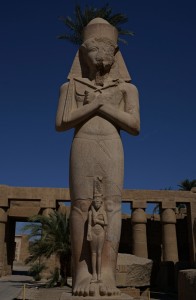 |
 |
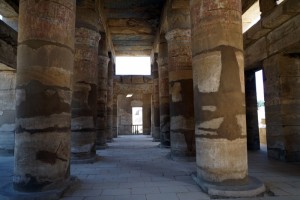 |
 |
 |
 |
 |
There are two colossal obelisks. The largest one erected by Hatsheput standing at 29m tall weighs 328 tons. After walking for an almost two hours with Tony, we reached the sacred lake (129m by 77m) and had free time for the rest of the day. I spent another hour strolling on my own soaking in the atmosphere.
Karnak has been extensively restored since my first visit. More information is now available on site. According to our guides, Maru and Tony, Luxor had as many as 5000 visitors a day during the peak season. The number of tourist arrivals has dropped drastically owing to political instability and terrorist threats in recent years. But I still find it too crowded and noisy as compared to my first visit in 1979. I returned to the hotel before midday.
Valleys of the Queens and Nobles
After a short rest, I set off again at 1 pm planning to take a ferry to the west bank and take a taxi to the Valley of the Queens which I had not visited in 1979. A taxi 229 stopped soon after I left the hotel. Omar, the driver, offered to take to the Valley of the Queens and the Nobles for E₤100. It was hot and I decided to take a taxi as he was not asking too much. I stopped by first went to the ticket office and brought tickets which cost much less than the Valley of the Kings. Mohammed said he had never visited the tombs. As the ticket for locals is much less than those for tourists, I am happy to pay for him too.
 The tombs in the Valley of the Queens mostly belong to the 19th and 20th Dynasties. A total of 80 tombs are now known and most of them were excavated by an Italian expedition led by E. Schiaparelli between 1903 and 1905. Today only four tombs are open. Only four tombs are opened. With my normal ticket (E₤50), I visited the tombs of Prince Amen-her-khopshef, a son of Ramses III and Titi. They contain some well-preserved colours on their wall paintings but less elaborate than those in the Valley of the Kings. The last one is the most famous Tomb of Queen Nefertari (QV66), wife of Ramses II which charges E₤1000 for a visit. I met only a couple of visitors here.
The tombs in the Valley of the Queens mostly belong to the 19th and 20th Dynasties. A total of 80 tombs are now known and most of them were excavated by an Italian expedition led by E. Schiaparelli between 1903 and 1905. Today only four tombs are open. Only four tombs are opened. With my normal ticket (E₤50), I visited the tombs of Prince Amen-her-khopshef, a son of Ramses III and Titi. They contain some well-preserved colours on their wall paintings but less elaborate than those in the Valley of the Kings. The last one is the most famous Tomb of Queen Nefertari (QV66), wife of Ramses II which charges E₤1000 for a visit. I met only a couple of visitors here.
I next visited the Tombs of the Nobles nearby. The site contains around 400 tombs of various dignitaries that date roughly from the 6th Dynasty to the Ptolemaic period. The tomb paintings are vivid and more interesting showing scenes from Egyptian daily life. I paid E₤100 for seven tombs. Apart from two Japanese tourists, I had all the tombs to myself!
 |
 |
- Rekhmire(TT100), the vizier under Tuthmosis III and Amenhotep II was responsible for taxation, justice and foreign policy. This tomb is of exceptional quality and historical importance especially for its texts which explains the various functions and responsibilities of the vizier. It also includes scenes of foreign people paying tribute and a comprehensive version of the ‘opening of the mouth’ ritual.
- Sennofer(TT96), mayor of Thebes and overseer of gardens of Amun during the reign of Amenhotep II. I had to go down a tunnel of about 20m long. Known as “Tomb of the vines”, it is famous for its ceiling, the quality of its reliefs and the state of conservation.
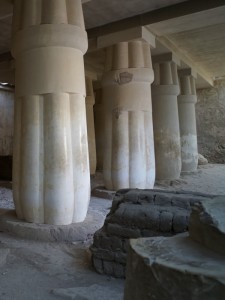 Ramose (TT55), governor of Thebes during Amenhotep IV’s reign. Work was begun on this tomb in the classical Egyptian style but changed to the Amarnan style when Amenhotep IV became Akhenaton and moved to Amarna. As Ramose followed the pharaoh, the tomb remained unfinished.
Ramose (TT55), governor of Thebes during Amenhotep IV’s reign. Work was begun on this tomb in the classical Egyptian style but changed to the Amarnan style when Amenhotep IV became Akhenaton and moved to Amarna. As Ramose followed the pharaoh, the tomb remained unfinished.- Userhat (TT56), a soldier close to King Amenhotep II with a brilliant career. The painting gives an unusual detailed insight into the life of soldiers whom he commanded.
- Khaemhat (TT57), a royal scribe and granary inspector. This tomb bears reliefs of harvests, unloading of boats, a market scene and cattle herds and a complete set of instruments employed in the opening of the mouth ritual.
- Nankht (TT52), an official and priest of Amun in the 18th Dynasty. Though small in size, the well preserved tomb includes some of the most beautiful paintings with vivid colours.
- Mena and Amenemo (TT69), a scribe of the fields of the Lord of the Two Lands, the overseer of agricultural activities. This tomb is decorated with extremely detailed scenes, providing a directory of mundane and funerary scenes.
I had a beer with Omar in the rooftop bar of the Nile Hotel and watched sunset. As he had not charged me much, I invited him for dinner. He took me to Oum Hasim, a popular local eatery and I paid E₤160 for 500gm of meat, rice, bread and salad for two persons. He is 39-year-old and seems more interested in finding a lady friend or wife: he has definitely found the wrong person! I had a long day and returned to the hotel before 7:30pm. By 9pm, I was fast asleep!




